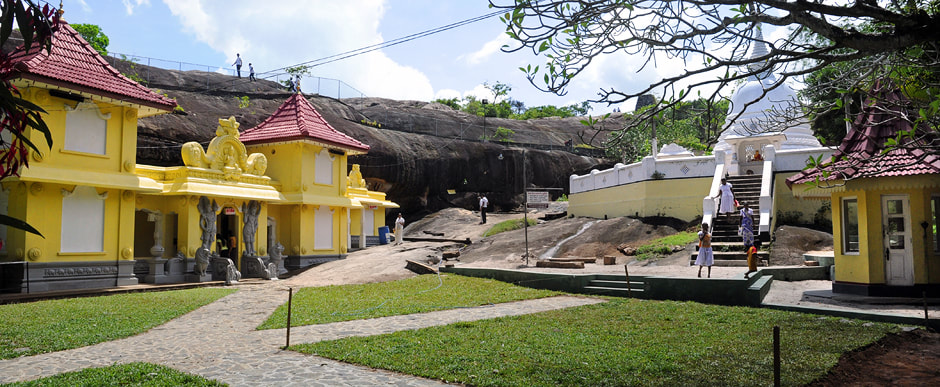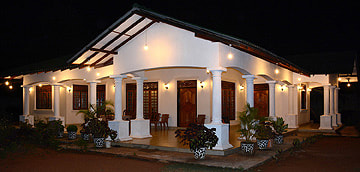Aluthepola Ganekanda Rajamaha Viharaya is a typical Buddhist cave temple 15 km east of Negombo. A rock shelter used as a dwelling by monks in antiquity was transformed into an image house, where also lay people venerat Buddha statues. The Aluthepola temple has been formally recognised as an archaeological site in 2002. The Sinhala toponym “Aluthepola” translates to “new market”.
The Aluthepola temple is one of the many cave in western and southeastern Sri Lanka that claims to have been the refuge of King Walagambha, known as Vatthagamani Abhaya in the ncient chronicles, during his 14 years in exile. Five months after his coronation, he had been forced to leave Anuradhapura due to a Tamil invasion. The king, having lost the battle went into hiding in various retreats, one of which was the cave of Aluthapola. After regaining the throne in Anuradhapura, he founded the Abhayagiri monastery and initiated the textualisation of the Buddhist scriptures that had been handed down orally till the 1st century B.C. Hence, the written Pali form of the Buddhist scriptures, the Tipitaka, is from his period.
The Aluthepola temple is one of the many cave in western and southeastern Sri Lanka that claims to have been the refuge of King Walagambha, known as Vatthagamani Abhaya in the ncient chronicles, during his 14 years in exile. Five months after his coronation, he had been forced to leave Anuradhapura due to a Tamil invasion. The king, having lost the battle went into hiding in various retreats, one of which was the cave of Aluthapola. After regaining the throne in Anuradhapura, he founded the Abhayagiri monastery and initiated the textualisation of the Buddhist scriptures that had been handed down orally till the 1st century B.C. Hence, the written Pali form of the Buddhist scriptures, the Tipitaka, is from his period.




